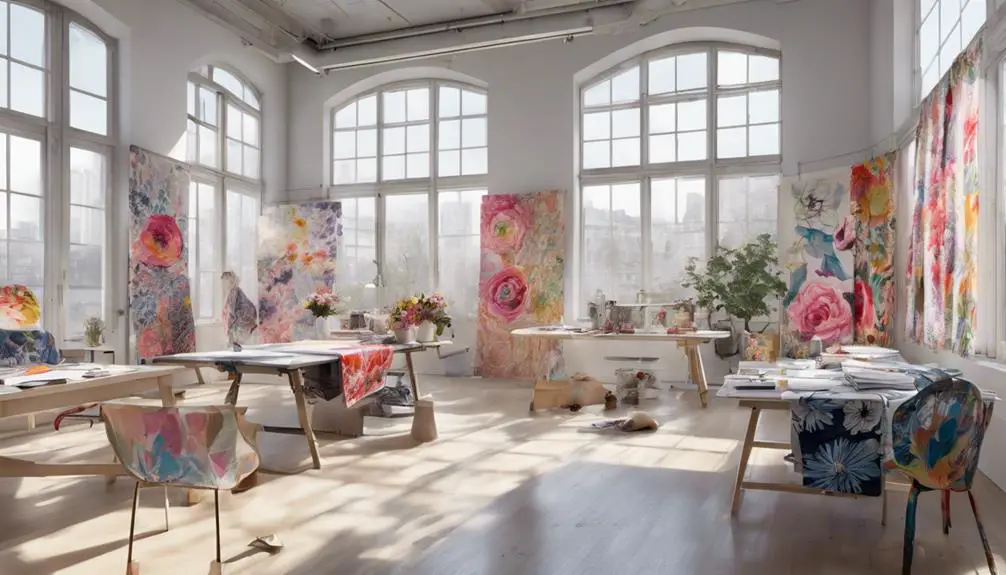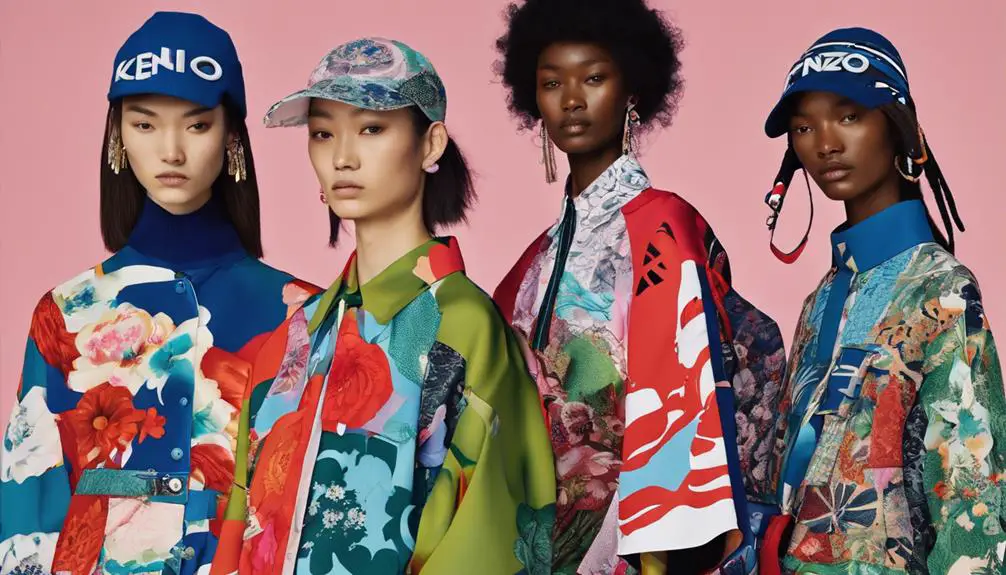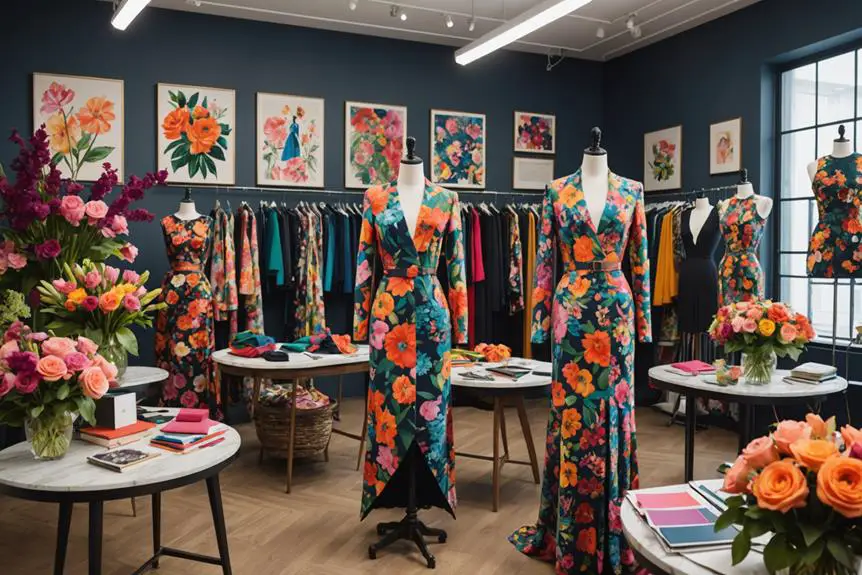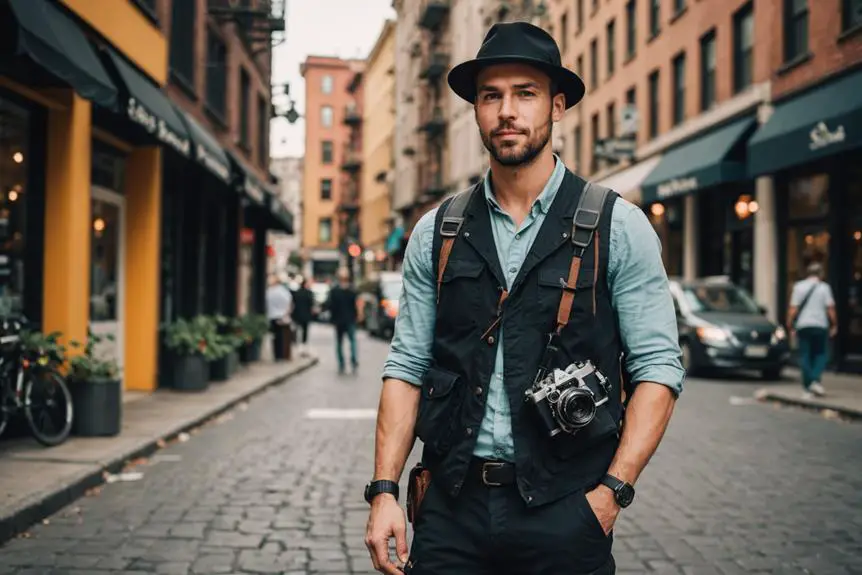You might think the House of Kenzo has been shaped solely by Kenzo Takada, but the truth is far more intricate. Each designer brings a distinct vision that intertwines cultural heritage with contemporary flair, creating a tapestry of influences. From Takada's oversized silhouettes to Kengo Kuma's embrace of traditional Japanese elements, and Nigo's youthful streetwear energy, each era offers a fresh perspective. What lies beneath these designs reveals not just fashion, but a deeper narrative that continues to evolve. So, what's really driving this evolution?
Kenzo Takada's Vision

Kenzo Takada's vision for fashion was revolutionary, blending Eastern and Western influences in a way that transformed the industry. When you think of Kenzo, you think of a vibrant fusion of cultures that's evident in his collections. Founded in 1970, the Kenzo brand quickly gained recognition for its bold, colorful designs, particularly with the debut of his "Big Look" collection in 1973.
These oversized silhouettes broke traditional fashion norms, showcasing Takada's unique perspective as a Japanese designer. This innovative approach laid the groundwork for the brand's evolution, as seen through its vintage tag designs that reflect various eras of fashion.
What truly set Kenzo apart was his global aesthetic. He drew inspiration from various cultures, creating pieces that celebrated diversity. This approach didn't just influence his clothing; it shaped the very essence of the Kenzo brand. Even after retiring in 1999, Takada's influence persisted, impacting luxury goods and art, culminating in a solo exhibition in 2010.
His legacy is magnificently captured in the Kenzo House, a project designed by Japanese architect Kengo Kuma. This home reflects Takada's vision of tranquility, utilizing light and natural materials to create harmonious spaces.
The interior courtyard serves as a serene focal point, inviting nature inside and embodying his belief that fashion and architecture can coexist beautifully. Through this blend of styles and materials, Takada's commitment to tranquility and connection with nature remains vibrant, inviting you to experience the unique essence of Kenzo in every aspect of his work.
Kengo Kuma's Renovation
In 2018, Kengo Kuma breathed new life into the Kenzo House, skillfully balancing the original design with modern enhancements. His renovation embraced traditional Japanese elements while incorporating natural materials like bamboo, ceramic, stone, and wood.
You'll notice how Kuma emphasized transparency and natural light, creating an open and inviting atmosphere that flows through the residence.
Here are three standout features of the renovation:
- Engawa Integration: This traditional Japanese architectural element enhances the warmth and tactile quality of the home, inviting you to experience a seamless passage between indoor and outdoor spaces.
- Serene Bedroom Placement: By repositioning the bedrooms, Kuma guaranteed they offer peaceful views of the landscaped Japanese garden, allowing residents to connect with nature and find tranquility in their surroundings.
- Eastern and Western Fusion: The design masterfully merges architectural styles, reflecting Kenzo Takada's vision for a harmonious living environment that resonates with both Eastern and Western sensibilities.
Kuma's thoughtful redesign preserved the original garden layout, showcasing his commitment to maintaining the Kenzo House's essence while elevating it to new heights.
By incorporating natural materials and embracing transparency, he created a space that isn't just a home but a sanctuary, inviting you to immerse yourself in its beauty and serenity.
This renovation not only honors the legacy of Kenzo Takada but also paves the way for future interpretations of comfort and style.
Nigo's Creative Direction

With the appointment of Nigo as creative director in September 2021, the House of Kenzo has initiated an exciting journey that blends its rich heritage with contemporary streetwear influences.
Nigo, renowned for founding the iconic streetwear brand A Bathing Ape, brings a wealth of experience and a fresh perspective to Kenzo. His vision focuses on merging vibrant prints and cultural influences that have long defined the brand with the modern aesthetics of streetwear, appealing directly to the youth.
Under Nigo's direction, Kenzo is embracing a playful and youthful approach to fashion, aiming to attract a new generation of consumers while staying true to its core identity.
This balance is essential, as it respects the brand's legacy while infusing it with contemporary relevance.
Significantly, Nigo has emphasized collaboration as a key strategy, exemplified by the successful partnership with Japanese artist Takashi Murakami, which showcases Kenzo's artistic flair and innovative spirit.
Influences on Design
Vibrant colors and intricate patterns stand at the heart of the design influences for the House of Kenzo, reflecting a rich tapestry of cultural heritage. Kenzo Takada, the brand's founder, drew deeply from his Japanese roots, incorporating traditional Japanese aesthetics into his collections. This connection is evident not only in the use of vibrant colors but also in the patterns that evoke the beauty of his homeland.
You can see the harmonious blend of influences in the following aspects:
- Japanese Architecture: The architectural design of Kenzo House, renovated by Kengo Kuma, emphasizes natural materials and a connection to nature, enhancing the brand's ethos. The use of shoji sliding doors and a central courtyard creates a serene environment that inspires creativity.
- Cultural Fusion: Kenzo's eclectic collections showcase a fusion of Eastern and Western elements. This global aesthetic invites diverse cultural influences, making the designs relatable to a broader audience.
- Contemporary Urban Vibe: Nigo, the current designer, infuses streetwear influences from his background at A Bathing Ape, bridging the gap between traditional Japanese design and modern urban fashion.
Incorporating these elements, Kenzo continues to push boundaries, celebrating a blend of cultural inspirations that resonate with fashion enthusiasts worldwide.
Cultural Impact of Kenzo

Drawing from its rich history, Kenzo has made a significant cultural impact since its launch. The brand's vibrant and eclectic designs haven't only set trends but also reshaped the fashion landscape. Kenzo Takada's first major collection in 1973, dubbed the "Big Look," showcased bold colors and cultural fusions that captivated audiences and inspired countless designers.
One of the standout moments in Kenzo's journey is the collaboration with H&M, which brought the brand's cultural relevance to a broader audience. This partnership made Kenzo's unique aesthetic accessible, proving that high fashion can resonate with everyday consumers. The iconic tiger motif sweater, released in 2012, became a cultural phenomenon, quickly selling out and solidifying Kenzo's status in contemporary fashion.
Kenzo's marketing strategies have played a vital role in enhancing its visibility. High-profile campaigns featuring celebrities like Britney Spears haven't only elevated the brand's appeal among younger audiences but also guaranteed its place in popular culture. These initiatives highlight how Kenzo remains relevant, capturing the essence of modern style while respecting its diverse roots.
Additionally, Kenzo's influence extends beyond fashion runways into everyday life, as seen through references in media, like the character Kenzo Harper in the BBC sitcom "My Family." Such moments illustrate the brand's integration into cultural narratives, affirming its lasting impact on both the fashion industry and popular culture.
Kenzo's journey is a reflection of its vibrant spirit and relentless innovation.




